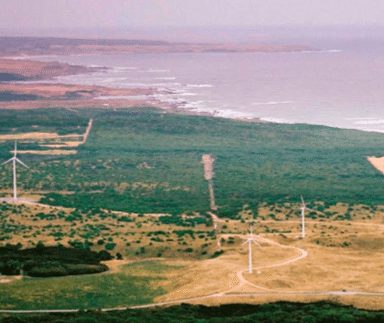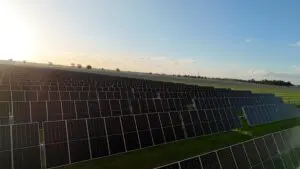Hydro Tasmania is to install a 3MW battery storage facility on King Island – the largest battery array in the country – in what it expects could give a glimpse into how the National Electricity Market will operate some time in the future.
The 3MW battery array will feature Australian designed technology supplied by Ecoult, the local subsidiary of the US-based East Penn Manufacturing Co, and is part of the $46 million project to build a fully renewable integrated grid on the island, located in Bass Strait to Tasmania’s north.
The “ultra battery” array was chosen not just for its ability to balance the output of wind, and fill in the gaps, but also because of its ability for all of the island’s power needs for up to 45 minutes.
It means that the island’s diesel generators, which have underpinned the electricity supply for decades, will be able to be switched off completely at certain times. This delivers a considerable saving, because if generators are used at all, they usually need to run at a minimum output of around 30 per cent.
The battery system will be integrated with wind and solar power, and a newly opened system that improves the integration of diesel generators with renewables. Over time, the imported diesel will be substituted with a locally sourced biodiesel, and total emissions will be cut by 95 per cent.
Hydro Tasmania’s head of renewable asset development, Simon Gamble, said there are hundreds of isolated systems such as this one, and thousands in the region, that need this sort of solution. “King Island is the test bed for our products,” he told RenewEconomy.
And Gamble noted that while some island nations are looking to 100 per cent renewable solutions, often by combining solar with battery storage for small villages, few faced the need to provide industrial customers as occurs on King Island.
For this reason, he said King Island Renewable Energy Integration Project would provide an insight into how the Australian grid might look in a few decades – a combination of renewables backed up by dispatchable power and with storage solutions. The King Island system will also feature smart grid technologies, demand management, and electric vehicle charging.
“The NEM is a much larger system, but it will have similar technical issues,” Gamble said. “If we are integrating more wind, and solar, we need to learn how to do it.”
King Island’s transformation began by introducing a couple of small wind turbines in 1998, which cut the usage of diesel by 15 per cent. “It was a bit of a no-brainer”, Gamble said. Diesel fuel had represented 80 per cent of energy costs on the island. Additional turbines installed in 2003 cut the diesel use further, but the big challenges lay with getting greater penetration of wind, and to integrate that into the system.
Once complete, King Island will have around 8.5MW of wind, just 100kW of solar PV (not a lot of sun), and battery storage. The aim is to reduce the consumption of diesel by at least 65 per cent, and then to eliminate the expensive and imported mineral diesel altogether with a locally sourced biofuel. The big difference with the mainland is that the NEM is likely to have a much large proportion of solar – both PV and solar thermal – over time.
He said the choice of Ecoult’s “ultrabattery” offering – over 20 competing proposals, including lithium-ion and flow battery solutions – was a “technical” one, based on its ability to balance and to supply energy.
The UltraBattery is a class of advanced lead-acid batteries that was invented by the CSIRO that boasts its high cycling life, high conversion efficiency and low operating costs. It has been used in the Hampton wind farm in NSW, and with solar farms and grid regulation situations overseas.
Ecoult CEO John Wood says he sees a growing market in the use of storage in the grid – for frequency regulation, and smoothing the output of renewables such as solar and wind.
Batteries will emerge as a critical component to matching supply and demand, and he says they are rapidly becoming competitive in costs. “We’re not that far from being part of the normal part of the kitbag for use by grid engineers,” he says.
“King Island will be an architecture that is used again and again and again.” He suspects that the market for variability management and remote storage will be larger than UPS (uninterruptible power supply) market is now. There is around 20GW of UPS storage in US today.








